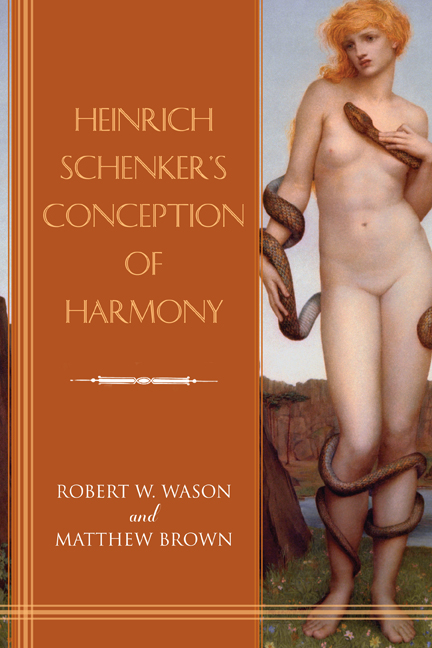Appendix B - “[Foundations of Tonal Systems.]” OC/31, 360–417
Published online by Cambridge University Press: 14 October 2020
Summary
The Theory of Systems: its Genesis in [DTS] and Revision in HL
Schenker starts the discussion of systems in HL with what amounts to the conclusion of the investigation of the harmonic series he had presented in [DTS], namely that it is only a “hint” (Wink) that has been vastly overrated. This seems to indicate that the discussion in [DTS] is preparatory for HL, for in [DTS] Schenker carefully considers the harmonic series as a source of tonal material, as well as the influence of human perceptual limitations on just how much of it can be used (§§3–6). In HL, on the other hand, he seems to describe the harmonic series quite neutrally and even perfunctorily (§9), ending the section by deriving the just minor triad (10:12:15), from the proportion 3:4, and even the chordal seventh from the seventh overtone. But in HL, §§10–11, Schenker criticizes and rejects all of these “derivations” other than the one he started with, the major triad. Clearly, in reworking this material, Schenker strove for the greatest rhetorical impact, constructing the argument as a critique of accepted harmonic dogma rather than a neutral investigation of the phenomena.
Crucial to the critique presented in HL, §10 is Schenker's notion that the generative process is essentially “successive” (Nacheinander), not “simultaneous” (Nebeneinander); these terms and attendant explanation appear in [DTS], §6. Schenker anthropomorphizes the process by briefly mentioning family trees in [DTS], §6, but to drive the point home in HL, he presents the Bach “family tree,” demonstrating both “successive” (generations) and “simultaneous” progeny (siblings). He then proceeds to reject all harmonic relations that do not issue directly from the fundamental, such as , the minor third, the minor triad, etc., all of which are only relations between “siblings.” In HL, §11, however, he continues by rejecting all of the “out-of-tune” overtones, contending that the fifth overtone is the limit on the usefulness of the harmonic series (cf. [DTS], §5). Whereas HL, §§12 and 14 emphasize the supremacy of the fifth (cf. [DTS], §§9–10), HL, §13 (on the status of the major triad in nature and in the system) has no parallel in [DTS].
- Type
- Chapter
- Information
- Heinrich Schenker's Conception of Harmony , pp. 425 - 454Publisher: Boydell & BrewerPrint publication year: 2020

